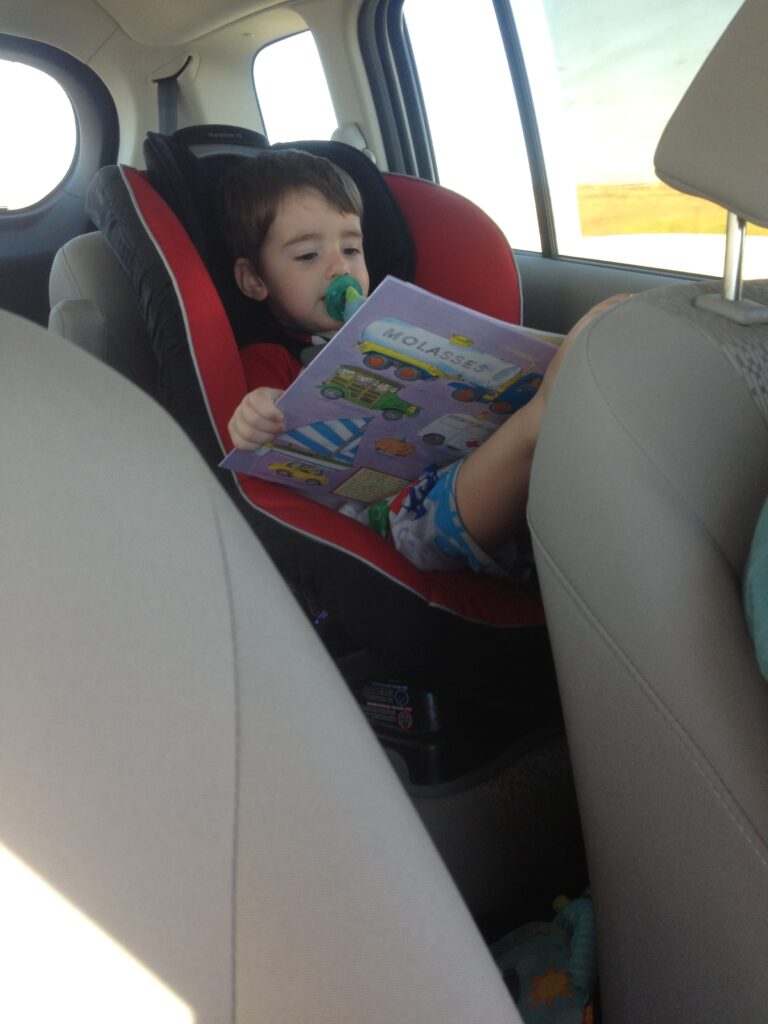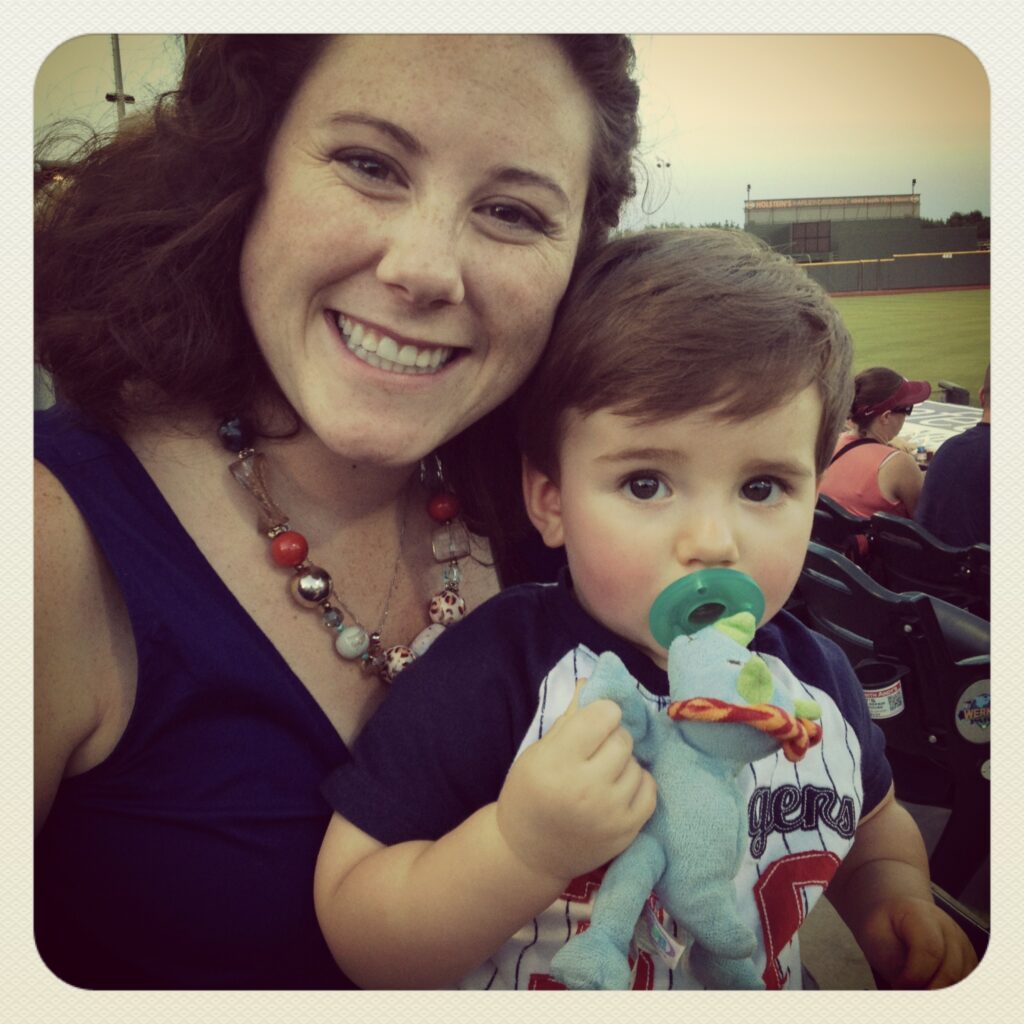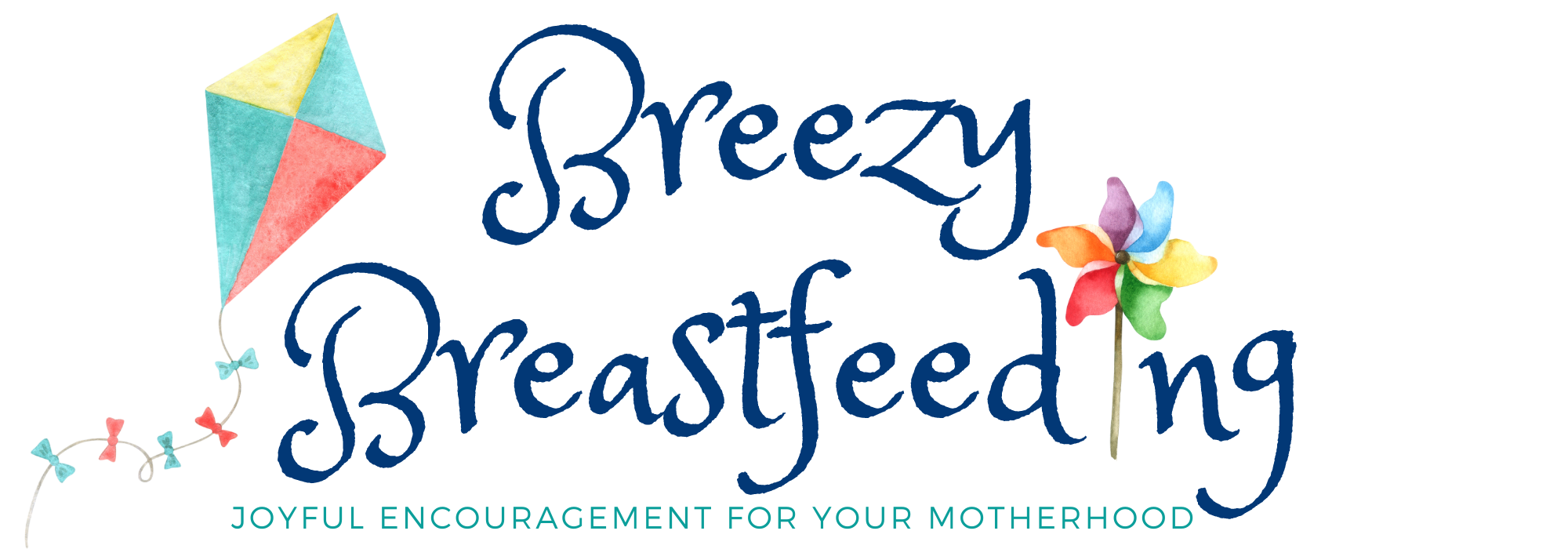I’m going to pretend I’m a funnel, digesting all this information about breastfeeding and pacifier use. Spitting out something simpler. Should I give a pacifier to my breastfeeding baby? There are many different answers, recommendations, and timelines for giving a pacifier to your breastfeeding baby. There are also diverse recommendations for taking the pacifier away.
The American Academy of Pediatrics (AAP) recommends:
- Avoiding pacifiers at first
- If breastfeeding is going well, offering a pacifier to babies at 4 weeks of age at the onset of sleep to decrease SIDS risks
- Taking the pacifier away at 6 months of age to decrease the risk of ear infections
Let’s start at the very beginning. A very good place to start. (Are you singing with Julie Andrews?)
AVOID A PACIFIER UNTIL BREASTFEEDING IS WELL ESTABLISHED
You should avoid a pacifier until breastfeeding is well established. Offering a pacifier early puts you at risk for low milk supply, pain with breastfeeding, and difficulty latching. Let’s look at each.
1. LOW MILK SUPPLY
During the first two weeks after your baby is born, your body is deciding the volume of milk you need. It decides this based on how much milk is removed from your breasts and how often your nipples are stimulated. The more milk is removed and the more frequently it is removed, the more milk your body makes and the faster your body makes it.
If less milk is removed and more time passes between removing milk, your body knows to make less milk.
If your newborn is sucking on a pacifier, they are showing feeding cues, but they are not suckling at the breast. Your body doesn’t know they’re showing feeding cues, your nipples are not stimulated, and milk is not removed. Pacifiers can intentionally or accidentally space feedings further. Your baby may be content sucking on the pacifier and go to sleep without eating. Especially babies born before 39 weeks. Spacing out feedings puts you at risk for a low milk supply with this baby. This happens to people all the time and they don’t understand why they don’t have enough milk later on. They didn’t build enough prolactin receptors by frequent nipple stimulation and milk removal in the first two weeks.
How do you build lots of prolactin receptors? Stimulate the nipples and remove milk. Put baby to breast when he shows feeding cues, at least 8-12 times per day. Help him get a deep latch.
2. NIPPLE PAIN
Babies suck on pacifiers different than they suckle at the breast. Think about it. With a pacifier, baby opens slightly, he uses negative suction and a chomping motion to keep the pacifier in his mouth. That is not what you want him to do at the breast! At the breast, his mouth should be very wide open, latching onto more than just the nipple. He should use his tongue in a wave like motion to remove milk from the breast.
When your newborn is learning how to breastfeed, he has a hard time doing different motions with a pacifier verses a breast. He may end up latching shallowly and chomping when he’s trying to breastfeed. This can cause nipple pain and breakdown.
3. DIFFICULTY LATCHING
Newborns like to feel the nipple hit the roof of their mouth. It stimulates them to suckle. That’s easy with a pacifier. It’s long and firm.
Most mother’s nipples do not look like pacifiers. They are much softer and shorter, especially if they haven’t breastfed a baby before. A baby gets used to the feel of a pacifier on the roof of his mouth. Then, he can get frustrated when he goes back to the breast. He is looking for the same firmness and he can’t find it. This can make latching take longer and involve a lot more crying.

WHAT TO DO IN THE FIRST COUPLE WEEKS INSTEAD OF GIVING A PACIFIER TO YOUR BREASTFEEDING BABY
While you are establishing breastfeeding AND your milk supply in the first few weeks, instead of a pacifier, try:
- Latching your baby at the breast. If you don’t want to because it’s hurting, get some help with obtaining a deeper latch.
- Offering baby your pinky finger (clean, pad side to the roof of their mouth). This is helpful if Dad has baby while mom is taking an especially needed nap or shower. Dad, put baby skin to skin (or swaddle him if he’s overstimulated) and offer him your pinky finger.
- Offer baby his hand. He’s been sucking on his hand in utero. In fact, when he first learned to swallow in utero, he always brought his hand to his mouth then swallowed. Many babies are happy to suck on their fist.
BREASTFEEDING AND PACIFIER USE: SHOULD I OFFER A PACIFIER?
In the end, the answer to this question is up to you. I have done it both ways. If you want your baby to take a pacifier, I would recommend waiting until breastfeeding is established well. That means you’re past the first two weeks, you have a great milk supply, baby is latching easily, and breastfeeding does not hurt. If that applies to you, awesome job, mama! Offer your baby a pacifier if you would like him to take one. In my experience, waiting until baby is 4 weeks old often leads to him not wanting the pacifier.
SOME PROS FOR BREASTFEEDING AND PACIFIER USE
PACIFIERS HELP BABIES WITH SEPARATION
AFTER THE INITIAL FEW WEEKS, I do think it is easier for moms when their baby takes a pacifier. It’s easier to leave your baby with someone because he can sooth without breastmilk. Say baby is ready to eat, grandma is watching him and you’ll be home soon. She can offer him a pacifier and a walk instead of another bottle. This leads to happier grandmas and therefore happier mamas because you get more grocery store runs by yourself. Plus you didn’t have to pump! You got to nurse your sweet baby when you got home.
Picture how many times you might want to leave him at home with dad over the first year. That’s a lot of rushing back to the house for the next feeding. Of course dads develop more and more skills for keeping baby happy over time. The time separated from mom is easier for baby if he has a consistent soothing item like a pacifier. If baby has an easier time, that means leaving is easier for mom.
PACIFIERS HELP BABIES SOOTHE AND MANAGE PAIN
Suckling does help babies soothe and manage pain. This can be especially important if they’re in the NICU and family isn’t able to stay with them all the time. For a newborn who stays with their mom, they have other options to manage pain.
- If a blood draw is happening in your post partum room, hold your baby skin to skin or nurse during the draw. This helps him to feel less pain. Whoever is drawing his lab should accommodate this.
- If your baby is going for a circumcision or another painful experience that you can’t nurse during. Dad or a staff member can put colostrum on their finger and let baby suckle. The sweetness of the colostrum and the suckling both help baby to feel less pain. Typical of Western Medicine, there is often “Sweet-Ease” available. This is a sugar water that nurses will dip a pacifier in to offer to the baby during a painful procedure. Or they may use it to calm baby during a non-painful process such as a hearing screen. It’s to introduce this to your newborn’s gut if mom can express a few drops of milk with her hand. Mom’s colostrum is very sweet and is perfect for helping a baby calm or ease their pain.

WHEN SHOULD I GIVE A PACIFIER TO MY BREASTFEEDING BABY?
If you get to a point, before breastfeeding is well established, and you wants to give up on breastfeeding. This is a great time to introduce a pacifier or a nipple shield and see if one of those things helps. Make sure to get some individualized lactation care! Small tweaks can make a big difference with breastfeeding ease and a lactation consultant can help you figure out what to change. A three hour break between feedings, a good nap, or a walk outside can really help your mindset.
HOW TO: BREASTFEEDING AND PACIFIER USE
After you introduce the pacifier, make sure your baby is still nursing well at least 8-12 times per day. If your baby is hungry, you don’t want to use the pacifier to delay feedings more than a few minutes if he’s very young. Offer the pacifier when you put him down for a nap and bedtime.
When baby is older, leave the pacifiers in his crib and car seat so he doesn’t have access to them all the time. This will help you wean from the pacifier later and help it not delay speech.

WEANING FROM A PACIFIER
There are some people who follow the AAP’s guidelines to take the pacifier away at 6 months to decrease ear infections. Kudos to them. There are way more of us parents who do not take a pacifier away from our happy 6 month old. Long term use of pacifiers can lead to tooth, oral, and speech problems but most of these occur with pacifiers after age 4.
Keep in mind, sleep might be tricky for a bit after you wean from a pacifier. I wouldn’t suggest taking a pacifier away right before a vacation or if they’re sick. Think about the upcoming week and ask yourself if it’s a good time. Typically, our kids are amazing nappers until we either take their pacifier away or put them in a big kid bed. So, just be mentally prepared for a week of change. Or a change that lasts forever like dropping their nap.
CAN SOME BABIES GET PACIFIERS DAY 1 OF LIFE AND BREASTFEED JUST FINE?
Of course. Breastfeeding is not black and white. Some babies will breastfeed with no complications after receiving a pacifier on day 1. Some will have complications. The more babies who are given pacifiers before breastfeeding is well established, the more breastfeeding problems arise.

IF YOU FEEL YOUR BABY WANTS TO NURSE TOO OFTEN
Do you feel your baby wants to nurse too often? I encourage you to call a lactation consultant. She may be able to help you over the phone. Tell her how often your baby is eating, peeing, and pooping and then your concerns about him wanting to nurse too often. Sometimes frequent nursing is just normal newborn behavior. Other times there are easy tweaks that make feedings more efficient and mom feel better about it. And sometimes frequent nursings are a sign something is off and needs addressed in order to breastfeed successfully in the long run.
MY FAVORITE PACIFIER
My favorite kind of pacifiers are Wubbanubs. When baby is young, he can’t get the pacifier back in his mouth if it falls out. However, he can likely get some part of a Wubbanub in his mouth. That means he can calm himself while you’re driving and in all sorts of others scenarios where you can’t get to him right away. My favorite ones are Mary Meyer Wubbanubs as they are extra cute. I mean, check out this dinosaur, duck, and super hero! We have a Leo, which means lion, so of course, he had the Lion Wubbanub. The cow and reindeer are darling, too. With my first two kids pacifiers were very helpful. Wherever we were at naptime or bedtime, I could hand them a pacifier and they would fall asleep. My last four kids? Not so much. I offered it. They never loved it. My theory is because I worked less and was home with them more. Sometimes siblings are different than each other. Sometimes the parents are different because of the stage of life and that also forms the child.

Share with someone who could use this information!






Leave a Reply